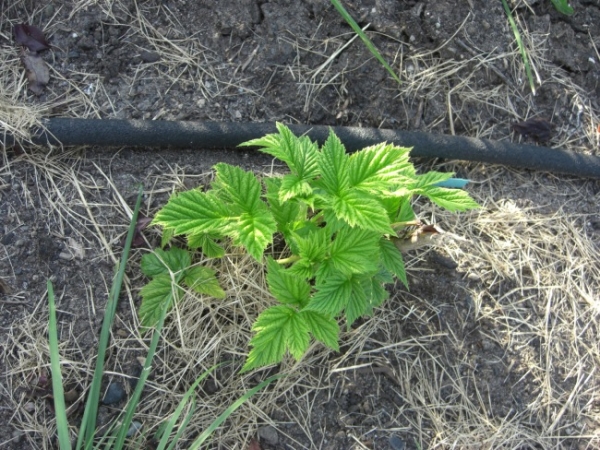Every caring gardener understands that over time (4-6 years), the yield of raspberries decreases. Which contributes to the need for transplantation.
Also, the cause of transplantation may be the cessation of fruitfulness, or growth in an unfit place.
Table of contents
In which season is it better to replant raspberries
In the spring
Most amateur gardeners transplant shoots at a time when the plant departs from the autumn-winter weather, namely in the spring, while this summer there is an opportunity to get a great harvest.
For this it is better to pre-prepare the plants, namely in the fall. Well use plants with a well-developed rhizome.
From practice, it is clear that if this is done correctly, then at the end of the summer you can collect a fairly good amount of raspberries.
If you comply with all the requirements for growing plants, timely changing the area of their growth, you can indulge yourself with a wonderful harvest of such useful berries all summer.
Summer
Plant raspberries possible in the summer months. But during this period one should be much more prudent to consider both the choice of the site and the month for this process.
Therefore, as during this period it is quite hot, it is necessary to plant in the evening or in the early morning, when there is no intense heat.
When choosing a place for raspberries, you must remember that the plant reacts negatively to direct sunlight. Therefore, it is better to choose a shady area in the area with diffused light.
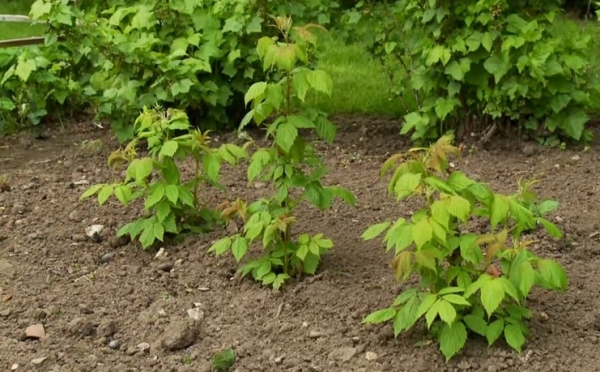
Wherein it is necessary to monitor the friability of the earth - It should be slightly loose. The best place is the site next to the stone blocks.
In the ground, before transplanting, be sure to make fertilizer, suitable - grassy infusion. In the last summer month, August, it is worthwhile to remove the old crimson shoots, and leave several new shoots for wintering.
During the summer heat, constant watering of the plant is necessary.
In the autumn
Most farmers tend to think that transplant procedure is best done at the end of summer and autumn. The most suitable month is September.
After 3-4 days it is also worth mulching with chopped straw or peat. This procedure will protect the shoots from the active growth of weeds, and at the same time also retain the long-term moisture necessary for growth.
How can you transplant raspberries to a new place
Proper planting material
For transplanting take annual siblings of a plant with a well-developed root system (15-20 cm). Elevated stem should be a diameter of at least 8-10 mm. Cooked seedlings are shortened to 30 cm.
With a small number of offspring, as well as to quickly increase the plantation with a good variety, root cuttings can be used (segments of roots). During the digging of seedlings (autumn), the remaining remnants of the root system are dug out of the ground.
They are left 3-5 mm thick and 10-15 cm long. Must be stored in wet sand in the basement until spring disembarkation.
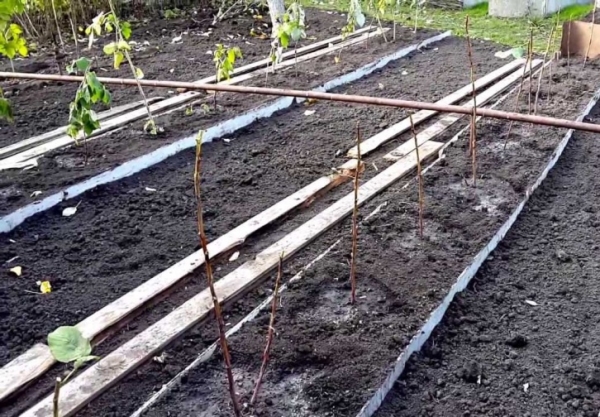
When planting raspberry seedlings should consider these points:
- the plant does not grow in low-lying areas, especially when they are flooded in the spring;
- raspberries do not like too much moisture, you need to water it in a timely and chaste manner. To do this, enough 4 buckets of water per 1 square. m twice a month;
- does not tolerate the plant shaded areas that are not protected from the cold wind;
- rows of raspberries are best planted from north to south, which will allow the sun to warm it well.
Trench or ribbon options
Trenches 40-45 cm deep and 50-60 cm wide are prepared for planting material.Seedlings should be in a trench with an interval of at least 40 cm, and the distance between the grooves of 1.5 m.
During the preparation of the grooves there fertilizer or ash must be applied. But when there is a fertile top layer, you can fill it with a trench instead of fertilizer.
Before planting, rhizomes are dipped into a mullein-based solution with clay, then carefully put in a trench and sprinkle with earth. After that, the seedlings are watered abundantly, and the soil is compacted and mulched around them.
Patching or bush transplant
This option is more suitable for transplanting remontants raspberries in the autumn. As in the ribbon version, so in the hollow soil they begin to prepare in advance.
Usually pits dig at least 60 cm in diameter and at least 40 cm deep. The distance between the pits is usually more than 1.5 meters, and the gap between the seedlings themselves is 0.7-1 m.
The soil before planting fertilize: humus, or ash, or fertile top layer. Before transplanting the soil is loosened.
Plants are immersed in a pit, previously moistened in a solution of mullein and clay, compacted and well watered.
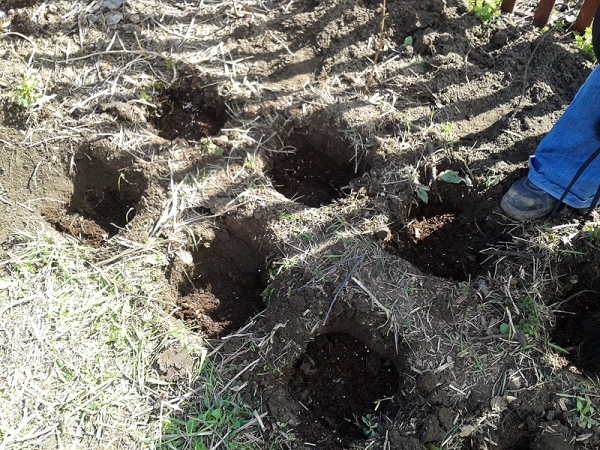
How to care for transplanted raspberries
Care for young seedlings necessary as follows:
- timely watering;
- fertilize regularly;
- systematically loosen the soil.
Seedlings when planting should be immersed to the same level at which they grew earlier. The root must be sprinkled with a composition of compost and top soil, and then gently compacted.
At the end of planting, watering is performed, at the rate of 1 bucket of water per bush and the subsequent covering of the soil with mulch.
You may be interested in the following publications:
To increase fruitfulness transplanted raspberry scions require special attention:
- It should promptly cut all the extra shoots, the life of which takes more than half of all the plant nutrients;
- before hibernation, young, weak, seedlings of two-year-old shoots, which will not suffer severe frost, must be removed;
- In the first month of spring, it is necessary to feed the plant by applying to the soil fertilizers: wood ash, manure, minerals;
- watering, you should take into account the fact that berry bushes negatively react to excessive humidity. It can also affect the quality of the berries and the amount of harvest.
Double Trim Secrets
Proper double pruning always good effect on the yield of berries. Only with quality care you can count on the continued fruitfulness of raspberries.
The sprouts which are withdrawn from the crop are pruned immediately after the last harvest at the root (without hemp), and young and thin shoots 50 cm in size are removed.
At the site leave strong seedlings with an interval of 10-15 cm. Toward the autumn they are tied in bunches.
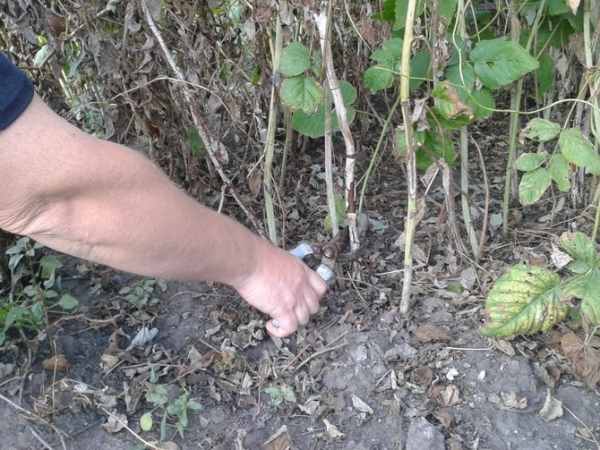
Spring features
Spring pruning of raspberries should be carried out in early March, after the snow melts until the earth is completely warm.
Examining the bush, it is necessary to cut off all frozen and damaged shoots, leaving 15-18 strongest on 1 m row. Frozen tops should also be shortened to a healthy kidney, tying the plant to the trellis.
There is a modern way of pruning - double pruning.
To ensure good fruitfulness not only remontantnoy, but also the usual raspberry, shoots should be pruned at different distances, up to 15 cm from the soil.
Moreover, the closer to the ground the cut, the later the plant will bear fruit.
According to Sobolev
Primary pruning according to Sobolev is done at the end of May. Cut the tops of young plants that have reached a height of 0.5-1 meters. In autumn, these shoots resemble small trees - the main stem with several lateral branches.
Secondary pruning is held next spring.when the frost-raspberry fully dissolves. In this case, the tops and their side branches are removed by 5-15 cm.
With the autumn transplant bushes it is best to plant only a few young offspring on a new plot than the whole bush. So the seedling will take root and take root faster.
It must be remembered that for a better harvest it is not necessary to overload and provide the bushes with high-quality fertilizers and sufficient watering.
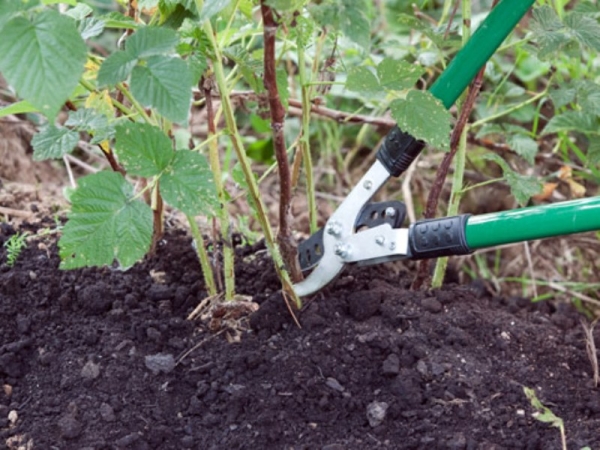
A systematic update of the raspberry plantation is needed to increase yields, because after a certain time the plant sucks out all the useful substances necessary for the growth of raspberries from the soil.
The plant should not grow more than 5-10 years in one place. Proper care and timely rejuvenation of the plantation will always please the gardener with high-quality yields.
How to increase the yield of raspberries, double pruning:
